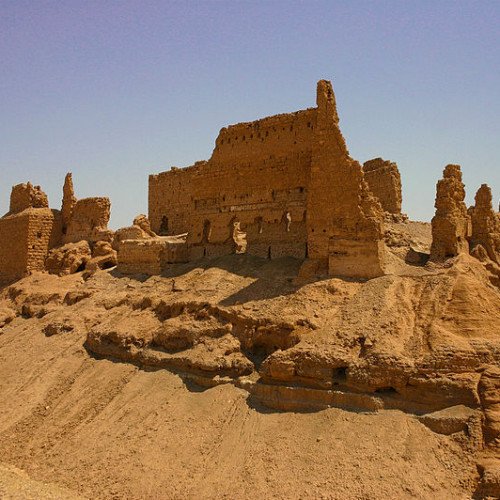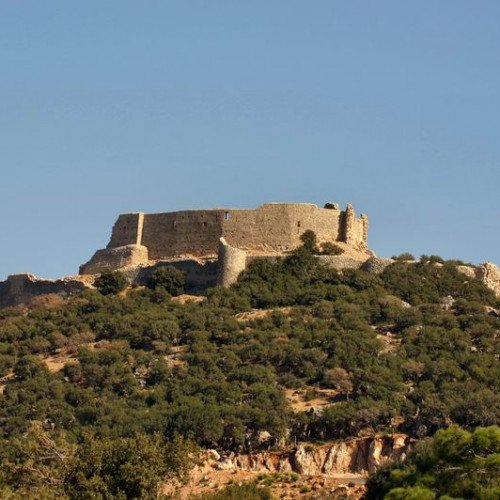Castles of "Syria" AL-RAHBA vs ABU QUBAYS

AL-RAHBA
Al-Rahba (/ALA-LC: al-Raḥba, sometimes spelled Raḥabah), also known as Qal'at al-Rahba, which translates as the "Citadel of al-Rahba", is a medieval Arab fortress on the west bank of the Euphrates River, adjacent to the city of Mayadin in Syria. Situated atop a mound with an elevation of 244 meters (801 ft), al-Rahba oversees the Syrian Desert steppe. It has been described as "a fortress within a fortress"; it consists of an inner keep measuring 60 by 30 meters (197 ft × 98 ft), protected by an enclosure measuring 270 by 95 meters (886 ft × 312 ft). Al-Rahba is largely in ruins today as a result of wind erosion. The original site, which was known as "Rahbat Malik ibn Tawk" after its Abbasid namesake and founder, was located along the Euphrates. It was viewed by Muslim armies, caravans and travelers as the key to Syria from Iraq and sometimes vice versa. Bedouin tribes often took control of it and used it as a launching point for invasions of northern Syria. Because of its strategic location, al-Rahba was frequently fought over by Muslim powers, including local lords, the Hamdanids, the Uqaylids, the Mirdasids and the Seljuks, among others. Rahbat Malik ibn Tawk was destroyed in an earthquake in 1157. A few years later, the current fortress was built close to the desert edge by the Zengid–Ayyubid lord Shirkuh. The latter's descendants held al-Rahba as a hereditary fief granted by Saladin until 1264. One of them, Shirkuh II, oversaw a third major reconstruction in 1207. Through the early Mamluk era (late 13th–14th centuries), the fortress was continuously restored and strengthened as a result of frequent sieges by the Ilkhanid Mongols of Iraq. Al-Rahba was the most important Mamluk fortress along the Euphrates, an administrative center and the terminal stop on the sultanate's postal route. It fell into disuse during Ottoman rule (1517–1918) and from then until the early 20th century, the fortress primarily served as a shelter for local shepherds and their flocks. Excavations were carried out at the site between 1976 and 1981.
Statistics for this Xoptio

ABU QUBAYS
Abu Qubays (Arabic: أبو قبيس also spelled Abu Qobeis, Abu Qubais or Bu Kubais; also known as Qartal) is a former medieval castle and currently an inhabited village in northwestern Syria, administratively part of the Hama Governorate, located northwest of Hama. It is situated in the al-Ghab plain, west of the Orontes River. Nearby localities include Daliyah 21 kilometers to the west, al-Laqbah to the south, Deir Shamil to the southeast, Tell Salhab to the northeast and Nahr al-Bared further northeast. According to the Syria Central Bureau of Statistics (CBS), Abu Qubays had a population of 758 in the 2004 census. Its inhabitants are predominantly Alawites. The castle at Abu Qubays is currently in a ruinous state, but most of its remains strongly indicate the architectural features typical of Isma'ili fortresses, namely small-sized and irregular masonry. It is circular in shape and consists of an exterior defensive wall with five towers, a small keep for provisions and residence and numerous subterranean storage chambers. The interior storage area is made up of a number rooms, a vaulted chamber and the ruins of a tower. The castle itself, situated on an eastern slope of the an-Nusayriyah Mountains, is surrounded by olive trees and overlooks the al-Ghab plain below.